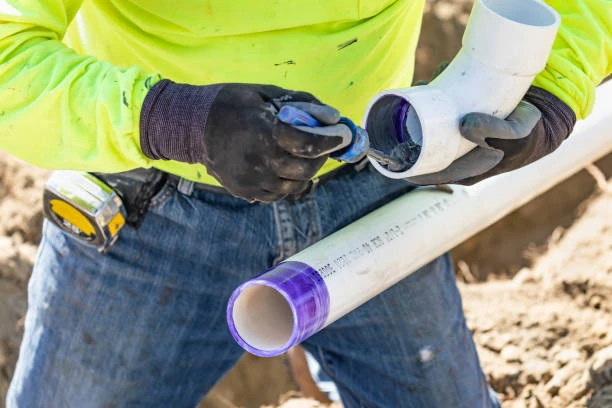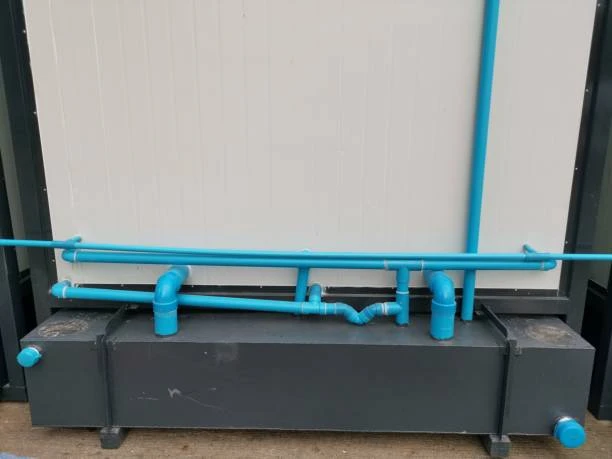The pipe manufacturing industry is currently facing a critical challenge as PVC prices experience significant declines. This article explores the implications of falling PVC prices on profit margins for pipe makers, the factors contributing to this trend, and potential strategies for navigating these challenges.
Understanding PVC Prices
What is PVC?
Polyvinyl Chloride (PVC) is a widely used thermoplastic in the construction and plumbing industries. Known for its durability, lightweight nature, and resistance to corrosion, PVC is a preferred material for pipes, fittings, and various construction applications.
Current Market Trends
Recently, PVC prices have been on a downward trajectory due to various market dynamics. While lower prices can benefit consumers, they present significant challenges for manufacturers reliant on stable pricing for profitability.
Factors Contributing to the Decline in PVC Prices
Supply and Demand Dynamics
The balance between supply and demand heavily influences PVC pricing. Increased production capacity, coupled with a slowdown in demand in certain sectors, has led to an oversupply of PVC in the market. As a result, prices have begun to melt, affecting manufacturers’ margins.
Raw Material Costs
Fluctuations in the cost of raw materials used in PVC production, such as ethylene and chlorine, also play a crucial role. When these input costs decrease, manufacturers may reduce their PVC prices to remain competitive, further squeezing profit margins.
Market Competition
Intense competition among pipe manufacturers can lead to aggressive pricing strategies. Companies may lower prices to capture market share, resulting in a downward spiral of PVC prices. This competitive pressure forces many manufacturers to evaluate their pricing strategies carefully.
Impacts on Pipe Manufacturers PVC Prices
Erosion of Profit Margins
As PVC prices melt, pipe manufacturers may experience a significant erosion of profit margins. With lower selling prices, the gap between production costs and revenue narrows, making it difficult for companies to maintain profitability.
Cost-Cutting Measures
To counteract shrinking margins, many manufacturers may resort to cost-cutting measures. These can include reducing labor costs, minimizing operational expenses, or even scaling back production. While these strategies may provide short-term relief, they can also affect long-term viability and product quality.
Potential for Industry Consolidation
Continuous pressure on margins may lead to increased consolidation within the industry. Smaller manufacturers struggling to remain profitable may seek mergers or acquisitions, resulting in a more concentrated market. This could reshape the competitive landscape and influence future pricing dynamics.

Strategies for Pipe Manufacturers PVC Prices
Diversification of Product Offerings
One effective strategy for pipe manufacturers is to diversify their product offerings. By expanding into new markets or introducing innovative products, companies can reduce their dependence on PVC pricing. This approach can also attract new customers and create additional revenue streams.
Operational Efficiency
Improving operational efficiency is crucial for mitigating the impact of declining PVC prices. Manufacturers can invest in automation and process improvements to reduce production costs. Streamlined operations can help maintain margins even in a challenging pricing environment.
Focus on Quality and Branding
In a competitive market, emphasizing product quality and brand reputation can differentiate manufacturers from their competitors. Companies that position themselves as providers of high-quality products may maintain customer loyalty and justify higher prices, even when overall market prices decline.
Future Outlook for PVC Prices
Market Recovery Potential
While current trends indicate declining PVC prices, the market may experience recovery as supply and demand dynamics stabilize. If production capacity adjusts to meet demand more effectively, prices may begin to rebound, offering relief to struggling manufacturers.
Regulatory Influences
Changes in regulations regarding PVC production and environmental concerns could also impact pricing. Stricter regulations may increase production costs, leading to higher PVC prices in the long term. Manufacturers should stay informed about potential regulatory changes that could affect their operations.
Conclusion
The recent melting of PVC prices presents significant challenges for pipe manufacturers, threatening their profit margins and prompting urgent strategic reevaluations. As the cost of raw materials fluctuates, manufacturers find themselves under pressure to maintain profitability while also meeting the demands of a competitive market. This situation has led many companies to reassess their operational strategies and explore new avenues for growth and stability.
To navigate this turbulent landscape, manufacturers are increasingly focusing on diversification. By expanding their product lines and exploring new markets, they can reduce dependency on PVC and mitigate the risks associated with price volatility. This strategic shift not only opens up new revenue streams but also enhances resilience against market fluctuations.
Operational efficiency has become another critical area of focus. Manufacturers are investing in advanced technologies and streamlining processes to reduce costs and improve productivity. By optimizing their supply chains and adopting lean manufacturing practices, they can better manage expenses and maintain competitive pricing without sacrificing quality.
Quality remains a cornerstone of the manufacturers’ strategies. As competition intensifies, delivering high-quality products becomes essential for retaining customer loyalty and attracting new clients. By implementing rigorous quality control measures and continuous improvement initiatives, manufacturers can ensure that their products meet or exceed industry standards, reinforcing their reputation in the market.
While the future remains uncertain, these proactive measures can help manufacturers navigate the challenges posed by fluctuating PVC prices. By adopting a multifaceted approach that emphasizes diversification, operational efficiency, and quality, they can not only weather the current storm but also position themselves for long-term viability and success in the industry. Embracing innovation and adaptability will be key as they strive to thrive in an ever-evolving market landscape.
FAQ
1. Why are PVC prices declining?
PVC prices are declining due to oversupply, reduced demand in some sectors, and fluctuating raw material costs.
2. How do falling PVC prices affect pipe manufacturers?
Falling prices can erode profit margins, forcing manufacturers to cut costs and reconsider their pricing strategies.
3. What strategies can manufacturers employ to cope with lower margins?
Manufacturers can diversify product offerings, improve operational efficiency, and focus on quality and branding.
4. Could the PVC market experience recovery?
Yes, if supply and demand stabilize, PVC prices may rebound, providing relief for manufacturers.
5. How might regulations impact PVC pricing in the future?
Stricter regulations could increase production costs, potentially leading to higher PVC prices over time.


















